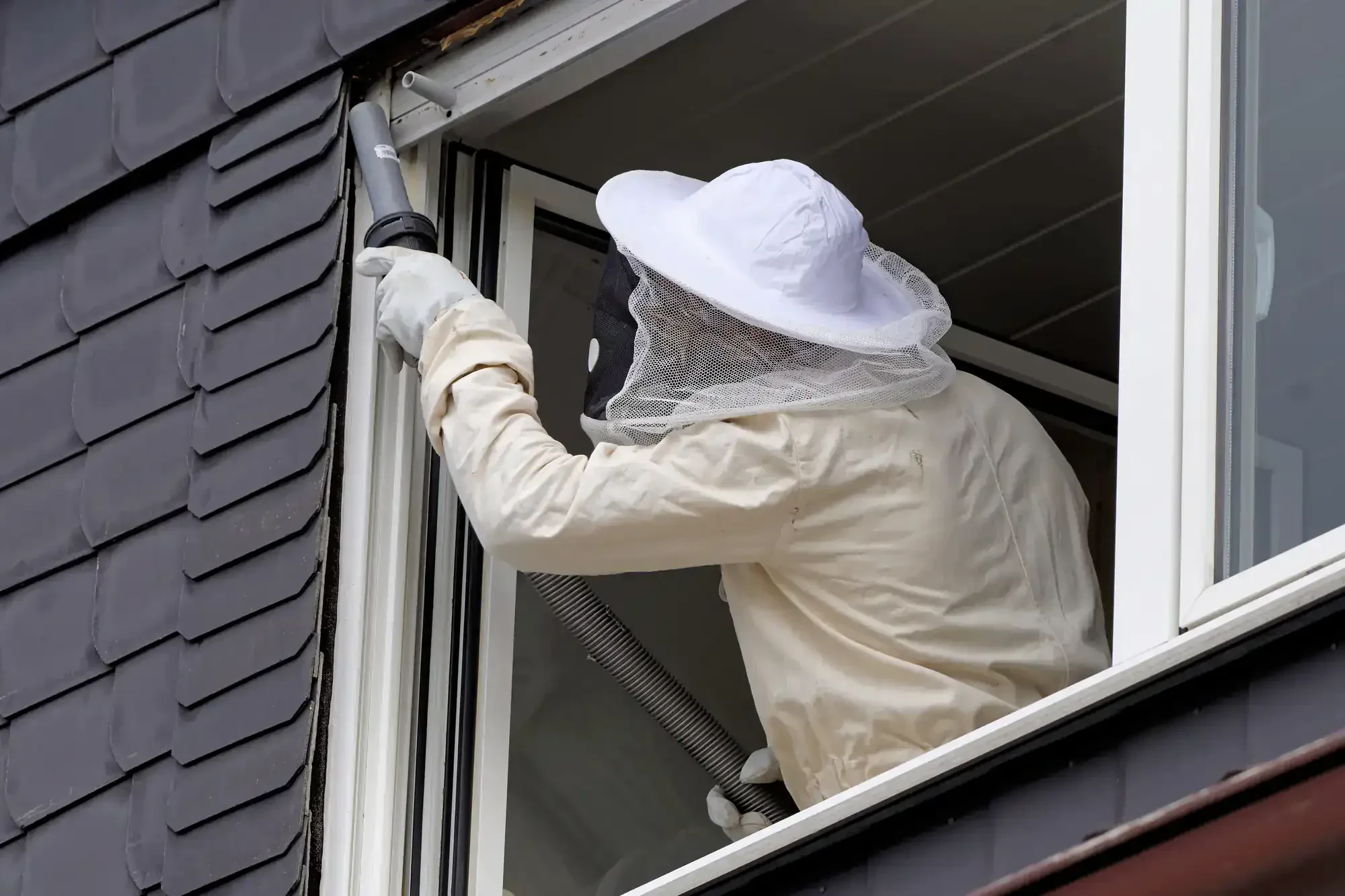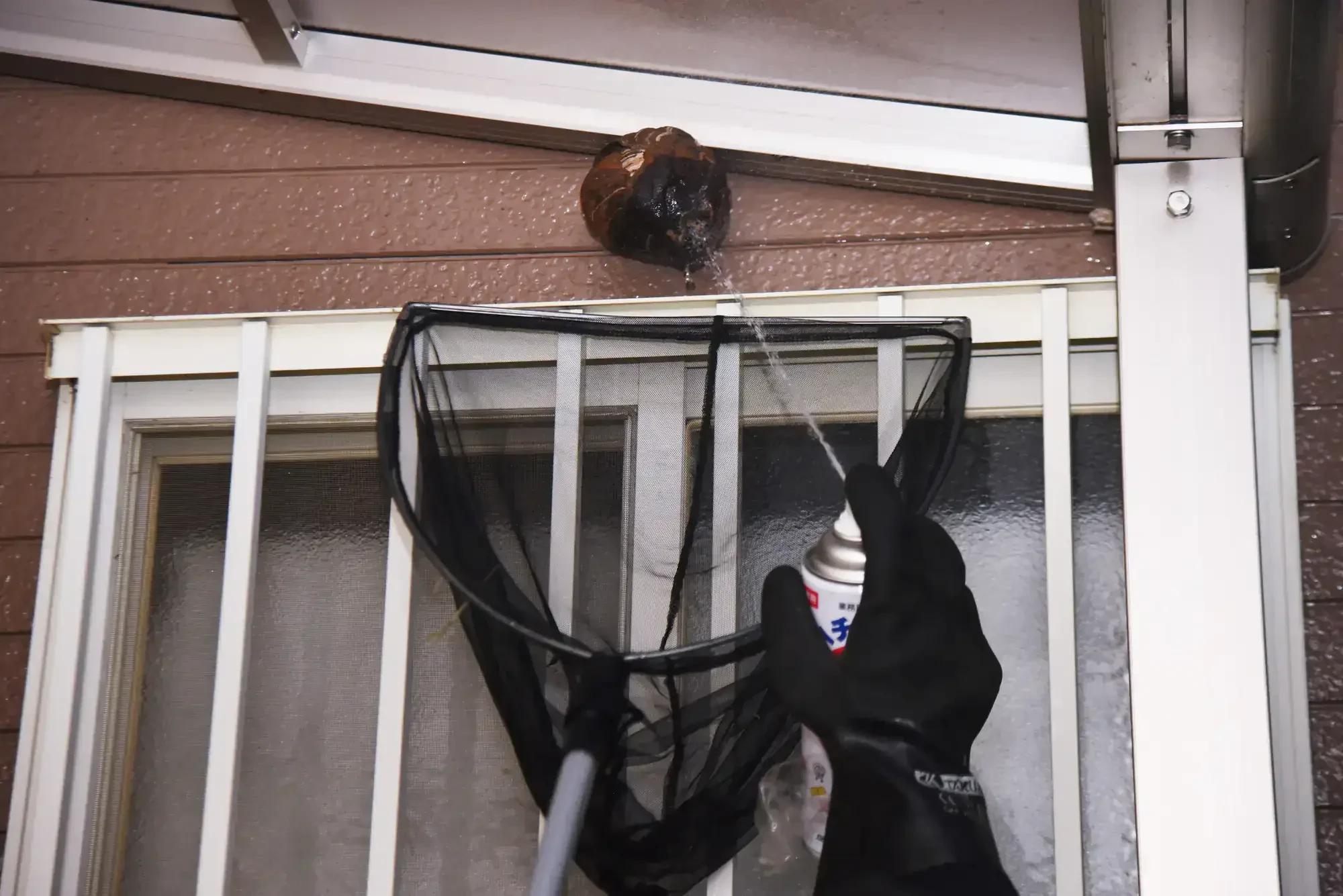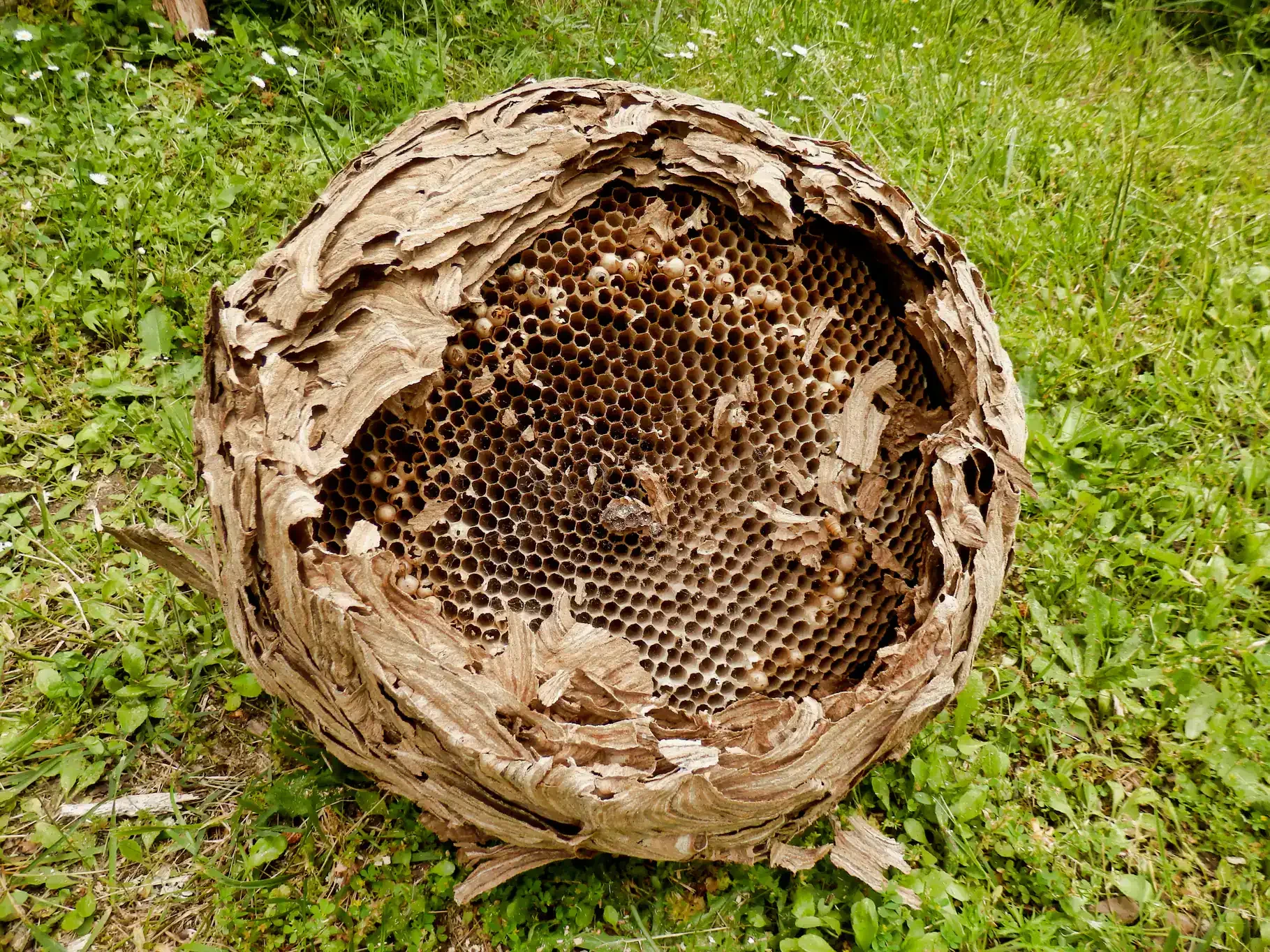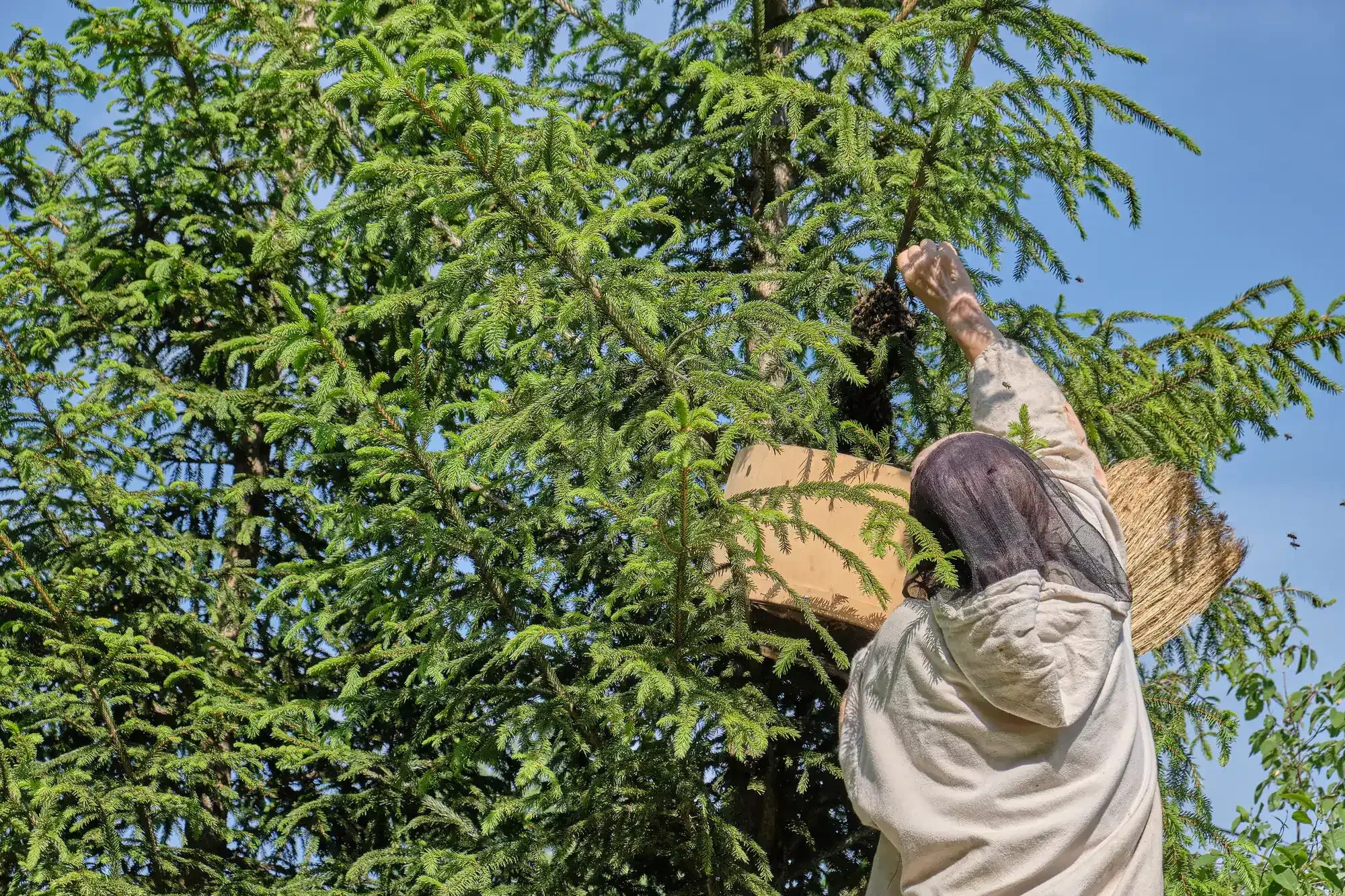
Hear from Our Customers

You get immediate relief from wasp problems without putting yourself in danger. No more worrying about aggressive yellow jackets swarming when you step too close to a ground nest, or discovering bald-faced hornets have built a basketball-sized nest in your tree.
Professional removal means the entire colony gets eliminated the first time, not just the visible wasps. You won’t deal with angry survivors returning to rebuild, and you won’t risk the emergency room visits that send many homeowners there after failed DIY attempts.
Your family can use your yard again. Your employees and customers stay safe. The buzzing in your walls stops, and you get back to living without constantly looking over your shoulder for stinging insects.
First Choice Pest Control has served Shiawassee County since 2005, celebrating 20 years of family-owned service. Roger brings 26 years of pest control expertise to every wasp removal job, with integrated pest management training and recognition from Angie’s List and Home Advisor.
We keep the same technician on your account year after year – no part-time college students handling dangerous wasp nests. Our personalized approach means we understand your property’s specific challenges, from ground-dwelling yellow jackets near Owosso to aggressive bald-faced hornets in Corunna’s wooded areas.
Veterans, seniors, and first responders receive special discounts because we believe in supporting our community. We’ll match reasonable competitor pricing, but you get the expertise that comes from decades of safely handling Michigan’s most aggressive stinging insects.

We start with a thorough property inspection to locate all nests – not just the obvious ones. Yellow jackets often build in wall voids and underground burrows that homeowners miss until it’s too late. Bald-faced hornets create massive aerial nests that require specialized equipment to reach safely.
Our removal happens during optimal times when wasps are less active, using professional-grade treatments that eliminate the entire colony. We don’t just spray and hope – we treat void areas with long-lasting insecticides that continue killing emerging wasps for months, preventing reestablishment.
After removal, we seal entry points and provide recommendations to make your property less attractive to future nest-building queens. You get a complete solution that addresses both the immediate threat and long-term prevention, backed by our experience with Shiawassee County’s specific wasp species and nesting patterns.

Ready to get started?
Your wasp nest removal service includes identification and elimination of all local species – from ground-dwelling eastern yellow jackets to Michigan’s most aggressive bald-faced hornets. We handle paper wasp nests under eaves, massive hornet colonies in trees, and hidden yellow jacket nests in wall voids that cause that ominous buzzing sound.
In Shiawassee County, late summer and early fall bring peak wasp aggression as colonies reach maximum size – sometimes housing 5,000 wasps. Our timing and safety protocols prevent the swarming attacks that send many DIY attempts to the emergency room.
We serve both residential and commercial properties throughout the county, understanding that businesses face unique liability concerns with stinging insects threatening customers and employees. Every removal includes follow-up monitoring and prevention recommendations specific to your property’s conditions, whether you’re dealing with rural ground nests or urban wall void infestations.

DIY wasp nest removal is extremely dangerous and often lands homeowners in emergency rooms. Wasps can sting multiple times and attack in swarms when their nest is threatened, especially Michigan’s aggressive species like bald-faced hornets and yellow jackets.
Ground nests are particularly hazardous because they’re hard to see until you step on them, causing the burrow to collapse and releasing hundreds of angry wasps. Store-bought sprays rarely reach entire colonies, especially those in wall voids or underground chambers, leaving survivors that become even more aggressive.
Professional removal uses specialized timing, safety equipment, and treatments that eliminate entire colonies safely. We handle the dangerous work so you don’t risk allergic reactions or multiple stings that require medical attention.
Early morning or late evening are optimal times when worker wasps are less active and most are inside the nest. Spring removal is ideal when colonies are still small, but we safely handle nests year-round using appropriate safety protocols.
In Michigan, wasp activity peaks in late summer and early fall when colonies reach maximum size and become most aggressive. This is when they’re most dangerous but also when most people discover nests on their property.
Never attempt removal during peak daytime hours when wasps are most active. Professional timing and safety equipment are essential because wasps will swarm and attack in large numbers when they feel their nest is threatened.
Shiawassee County is home to several aggressive wasp species, including yellow jackets, bald-faced hornets, and paper wasps. Bald-faced hornets are Michigan’s most aggressive stinging insect and will often sting without much provocation, building large aerial nests that can grow larger than basketballs.
Yellow jackets are commonly found in ground burrows and wall voids, becoming extremely aggressive when defending their colonies. Eastern yellow jackets typically nest underground while German yellow jackets often nest inside buildings, attics, and walls.
Paper wasps build umbrella-shaped nests under eaves and overhangs. While less aggressive than hornets and yellow jackets, they can still deliver painful stings and will defend their nests when threatened. Professional identification is crucial because different species require different removal approaches.
Professional wasp nest removal in Shiawassee County typically ranges from $300 to $700, depending on nest size, location, and wasp species. Ground nests and small aerial nests cost less to remove, while nests in wall voids, high locations, or multiple nest situations increase the price.
Factors affecting cost include nest accessibility, species aggressiveness, time of year, and whether follow-up treatments are needed. Complex removals involving wall voids or structural access require additional time and specialized equipment.
We provide upfront pricing with no surprises and offer price matching for reasonable competitor rates. The investment in professional removal prevents costly emergency room visits from failed DIY attempts and ensures complete elimination of the threat to your family or business.
Wasps typically don’t reuse old nests, but they may build new ones in the same attractive locations. Queens overwinter elsewhere and start fresh colonies in spring, often choosing similar protected areas that provided good conditions for the previous nest.
Without proper prevention measures, you’re likely to see new nests in similar locations because the conditions that attracted the first colony haven’t changed. Professional removal includes treating the area and sealing entry points to prevent reestablishment.
We also remove nest remnants that might attract new colonies to the same spot and provide recommendations to make your property less attractive to nest-building queens. Our service includes guidance on eliminating food sources and shelter areas that draw wasps to your property.
Yes, we specialize in removing nests from wall voids, attics, and other challenging locations where wasps commonly build in Shiawassee County properties. Yellow jackets frequently nest inside walls, creating that buzzing sound that indicates a serious infestation.
Wall void removals require specialized equipment and techniques to reach the entire colony without causing structural damage. We use dust insecticides that penetrate void spaces and continue killing emerging wasps for months after treatment.
High aerial nests and hard-to-access locations are handled with professional-grade equipment and safety protocols. Our experience with Michigan’s building styles and common nesting sites means we can safely access and eliminate nests that would be extremely dangerous for homeowners to attempt themselves.